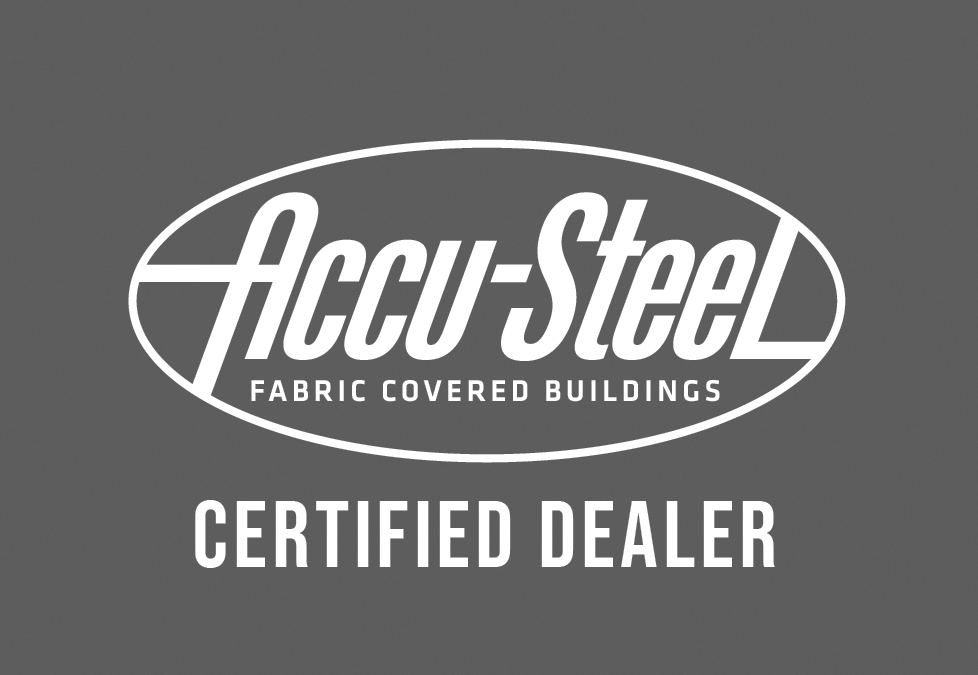Covering Your Municipal Buildings
A fabric structure for a municipal equipment building could be a tension fabric building, which is a type of pre-engineered building that is made of steel frames and covered with a fabric membrane. The fabric membrane can be made of a variety of materials, such as PVC or polyethylene, and is tensioned over the steel frames to create a tight, weather-resistant cover. These buildings can be designed to be freestanding or attached to existing structures, and can be customized to meet the specific needs of the municipality, such as size, height, and door and window placement. They are often used as storage buildings, maintenance facilities, or equipment shelters.
A fabric structure for a municipal building can be used to store a variety of equipment and materials. Some examples include:
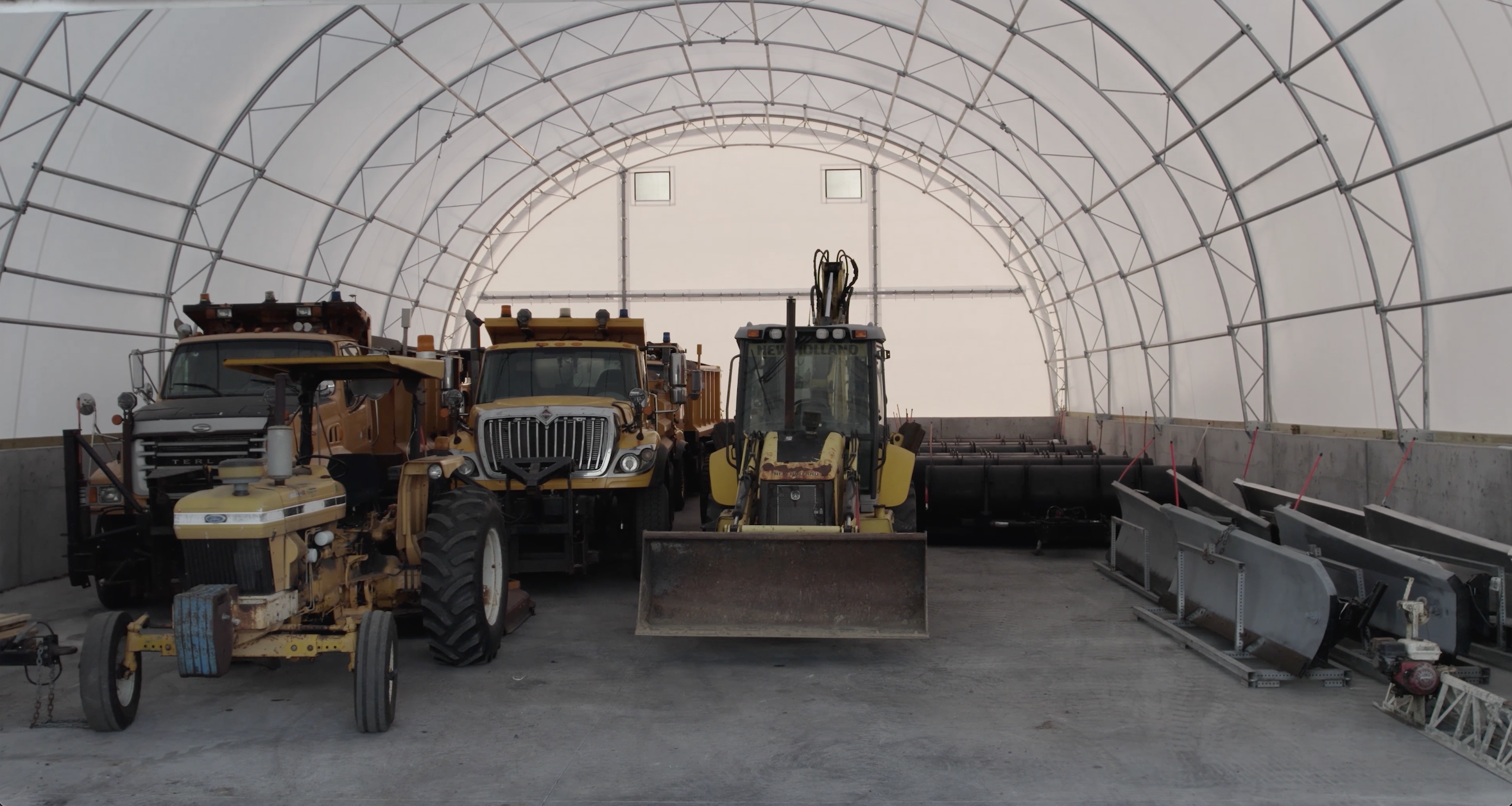
Heavy Equipment
Vehicles such as trucks, buses, and snow plows and heavy equipment such as excavators, bulldozers, and backhoes.
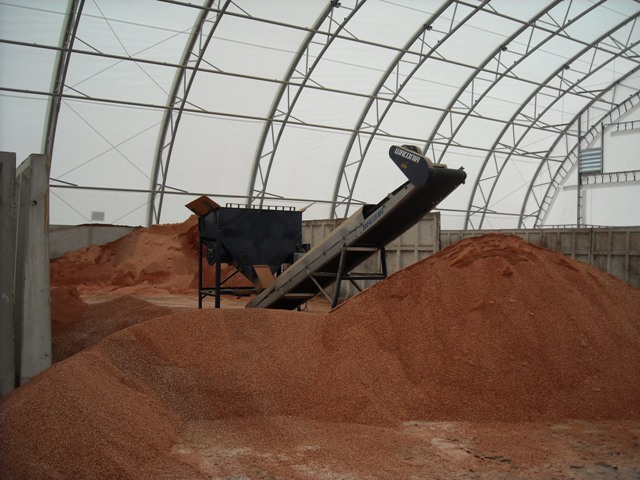
Road Maintenance
Road maintenance equipment such as salt spreaders, sanders, and plows. Along with maintenance materials such as salt storage, gravel, and other dry materials such as street and traffic signs
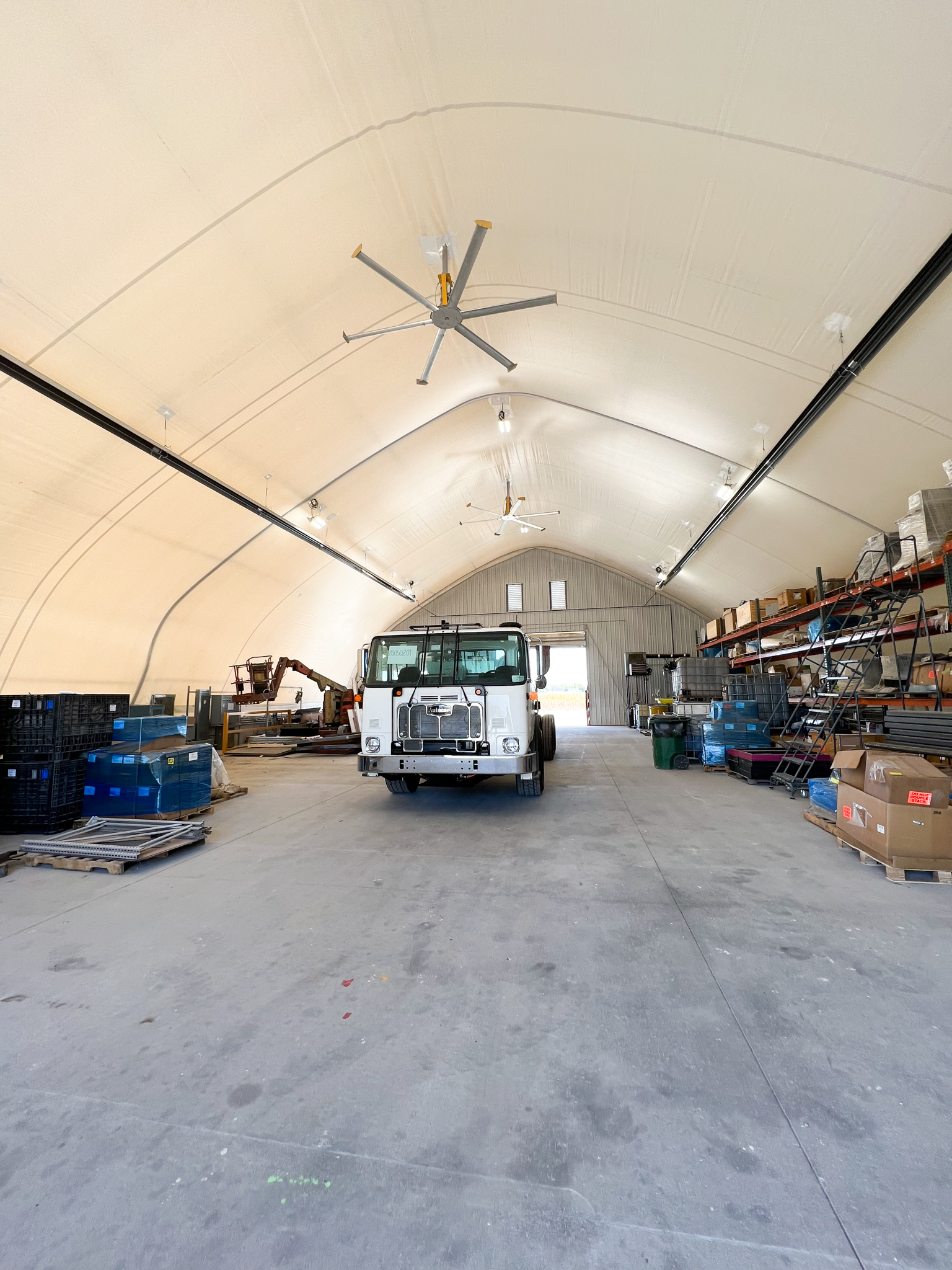
Maintenance Facilities
In some cases, it can also be used as a maintenance facility for the equipment, with workbenches, tool storage and lifts. Along with Tools and supplies such as hand tools, power tools, and spare parts
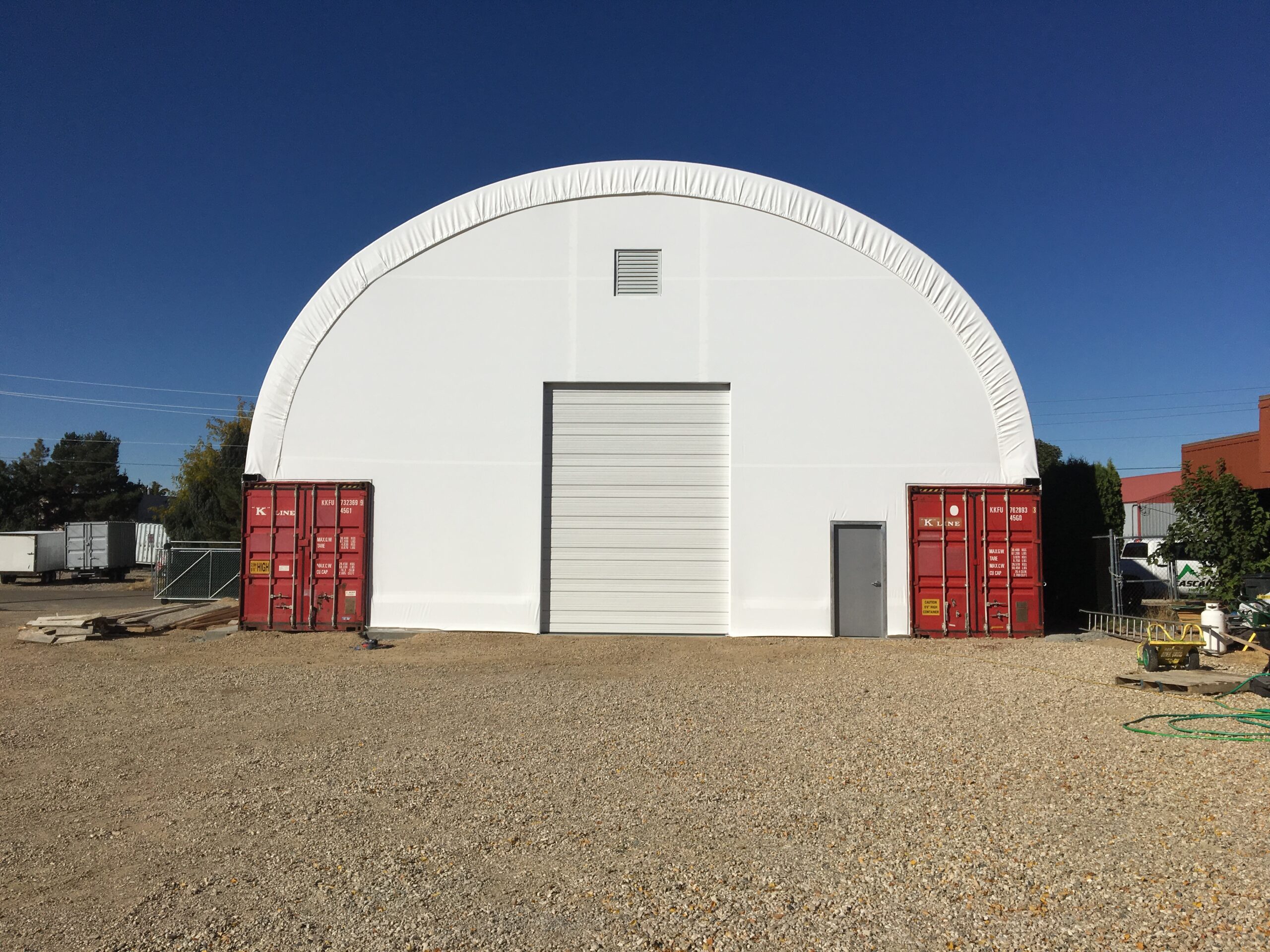
Landscaping
Landscaping equipment such as lawn mowers, trimmers, and leaf blowers.
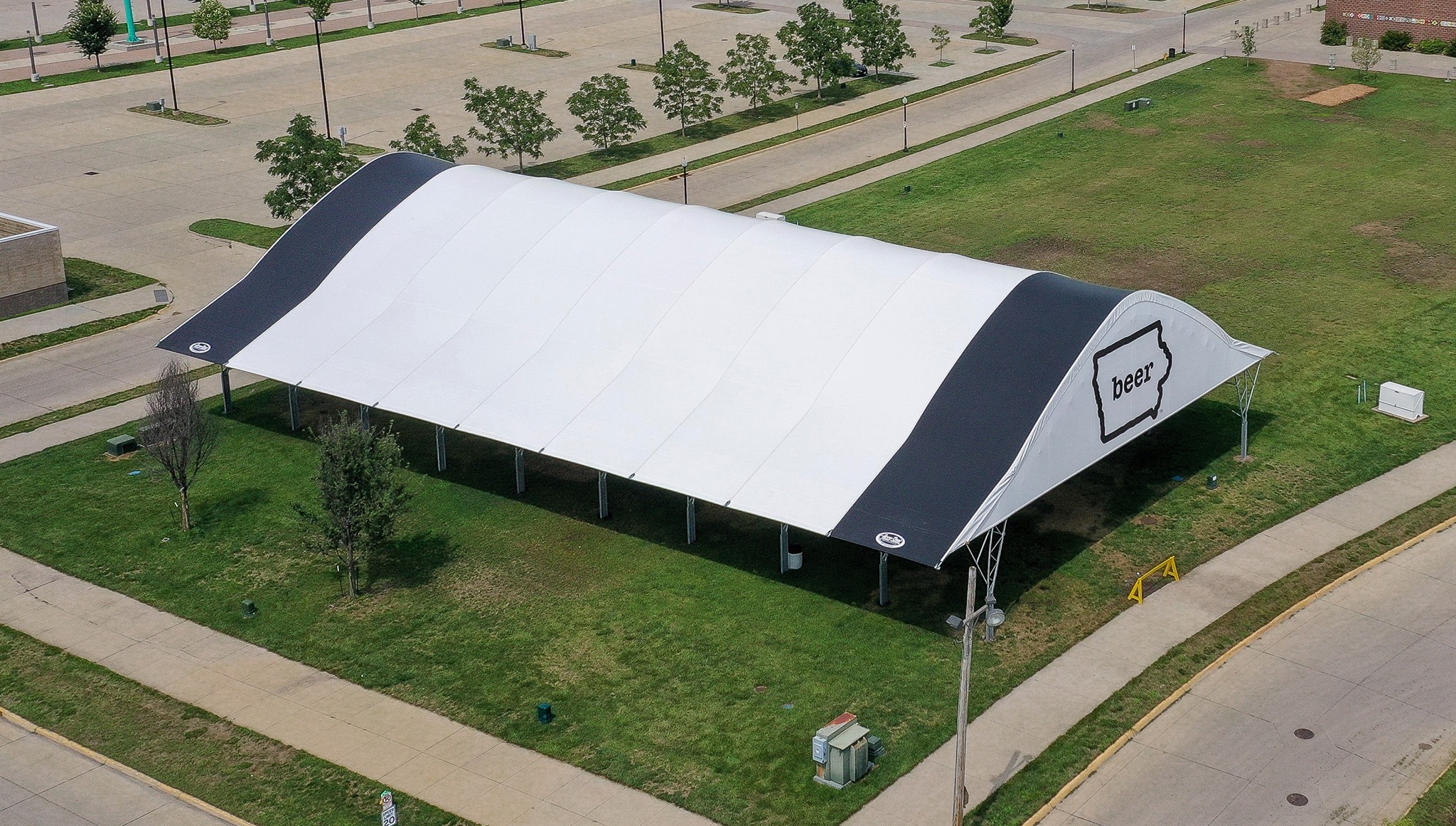
Event Organizers
A fabric building for an athletic complex can be used for different events like sports events, music concerts, festivals and many more.
![DJI_0361-HDR[1]](https://winstonmichael.com/wp-content/uploads/2023/08/DJI_0361-HDR1-scaled.jpg)
Hazardous Materials
Hazardous materials such as chemicals and fuels, if the building is designed with the appropriate fire-resistant and ventilation systems.
What size of fabric structure can I build?
The size of a fabric structure for a municipal building can vary depending on the specific needs of the municipality. They can be designed to be quite large, with clear span widths up to 300 feet or more and lengths of any size, as well as a height of around 40ft. These large fabric structures can provide ample space for storing large vehicles and heavy equipment, as well as providing room for maintenance and repair work.
Additionally, fabric structures can be designed to be smaller, with clear span widths of 20-50 feet, and lengths of any size, with a height of around 20ft, and can be used for storing smaller equipment and tools, or as a shelter for outdoor equipment and materials.
The size of the fabric structure can also be customizable to the specific needs of the municipality, such as the number of bays for vehicles and equipment, door and window placement, and height.
Why municipalities are choosing fabric structures over traditional buildings
Cost-effectiveness
Fabric structures are generally less expensive to build and maintain than traditional, permanent structures, making them a cost-effective option for municipalities.
Flexibility
Fabric structures can be easily customized to meet the specific needs of the municipality, such as size, shape, and door and window placement, and can be designed to be free-standing or attached to existing structures.
Durability
Many fabric structures are made of high-quality, heavy-duty materials that are designed to withstand harsh weather conditions, such as high winds and heavy snow.
Quick Installation
Fabric structures can be erected and ready for use in a relatively short amount of time, which is a great advantage for municipalities that need to store equipment and materials.
Energy Efficiency
Many fabric structures are designed with energy-efficient features, such as insulation, which can help to keep equipment and materials stored inside at a more consistent temperature and reduce energy costs.

